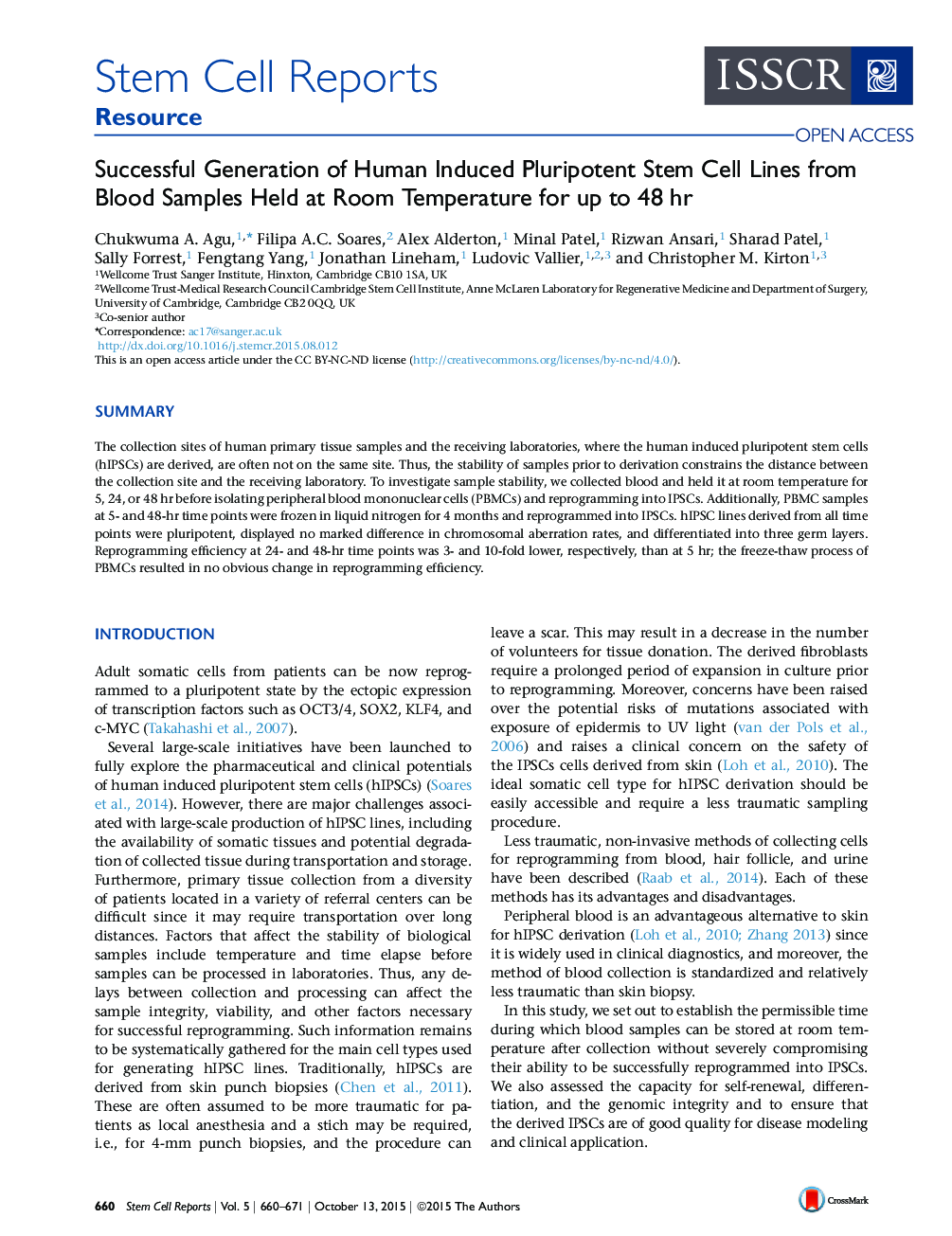| Article ID | Journal | Published Year | Pages | File Type |
|---|---|---|---|---|
| 2093431 | Stem Cell Reports | 2015 | 12 Pages |
•hIPSCs were derived from blood samples stored for 2 days at room temperature•Blood held for 24 and 48 hr produced less IPSC colonies than at 5 hr•Increasing input cells and virus volumes rescued the drop in reprogramming efficiency•IPSCs from all three storage time points can differentiate into three germ layers
SummaryThe collection sites of human primary tissue samples and the receiving laboratories, where the human induced pluripotent stem cells (hIPSCs) are derived, are often not on the same site. Thus, the stability of samples prior to derivation constrains the distance between the collection site and the receiving laboratory. To investigate sample stability, we collected blood and held it at room temperature for 5, 24, or 48 hr before isolating peripheral blood mononuclear cells (PBMCs) and reprogramming into IPSCs. Additionally, PBMC samples at 5- and 48-hr time points were frozen in liquid nitrogen for 4 months and reprogrammed into IPSCs. hIPSC lines derived from all time points were pluripotent, displayed no marked difference in chromosomal aberration rates, and differentiated into three germ layers. Reprogramming efficiency at 24- and 48-hr time points was 3- and 10-fold lower, respectively, than at 5 hr; the freeze-thaw process of PBMCs resulted in no obvious change in reprogramming efficiency.
Graphical AbstractFigure optionsDownload full-size imageDownload as PowerPoint slide
